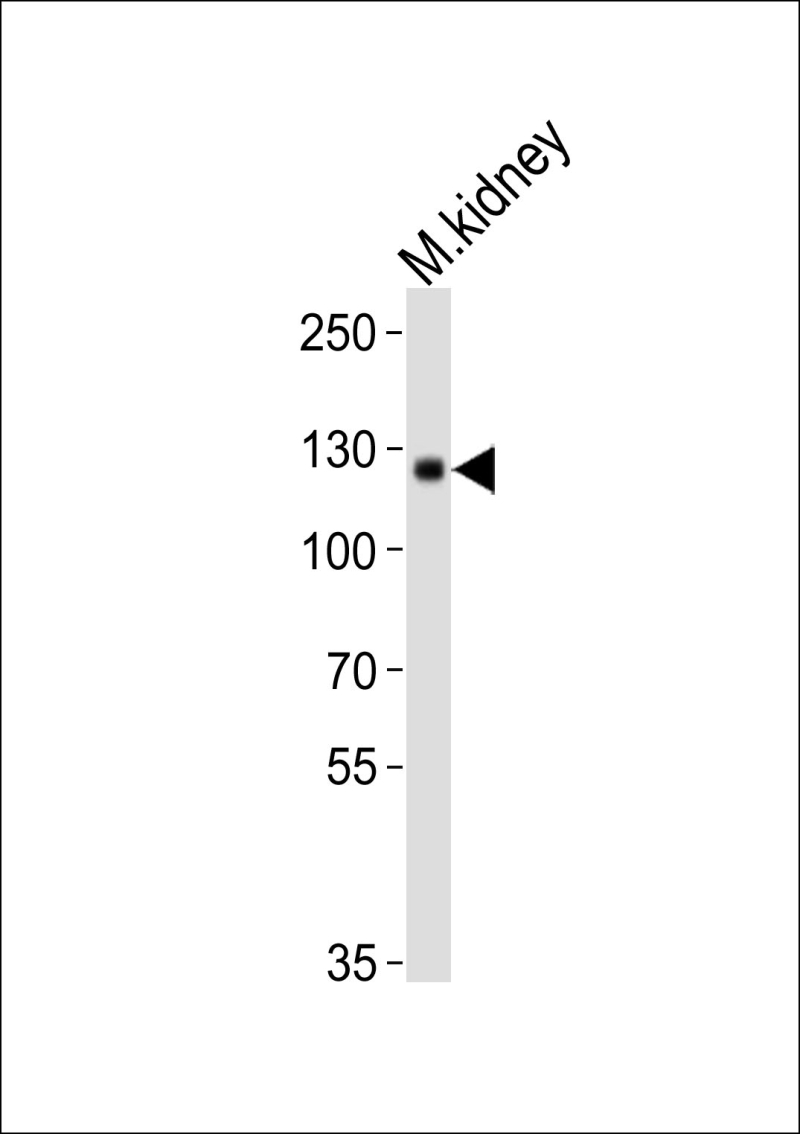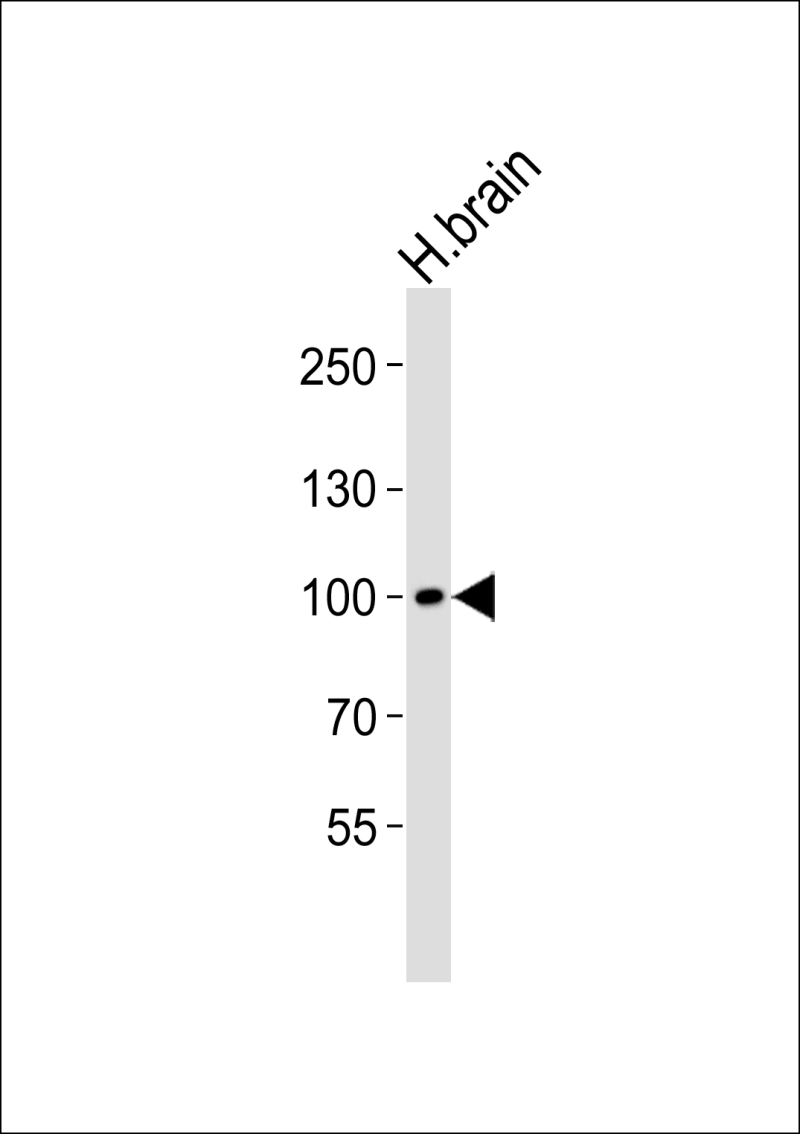

| WB | 1/1000 | Human,Mouse,Rat |
| IF | 咨询技术 | Human,Mouse,Rat |
| IHC | 咨询技术 | Human,Mouse,Rat |
| ICC | 技术咨询 | Human,Mouse,Rat |
| FCM | 咨询技术 | Human,Mouse,Rat |
| Elisa | 咨询技术 | Human,Mouse,Rat |
| Aliases | Epithelial discoidin domain-containing receptor 1, Epithelial discoidin domain receptor 1, CD167 antigen-like family member A, Cell adhesion kinase, Discoidin receptor tyrosine kinase, Protein-tyrosine kinase MPK-6, Tyrosine kinase DDR, Tyrosine-protein kinase CAK, CD167a, Ddr1, Cak, Eddr1, Mpk6 |
| Entrez GeneID | 12305 |
| WB Predicted band size | 101.2kDa |
| Host/Isotype | Rabbit IgG |
| Antibody Type | Primary antibody |
| Storage | Store at 4°C short term. Aliquot and store at -20°C long term. Avoid freeze/thaw cycles. |
| Species Reactivity | Human, Mouse, Rat |
| Immunogen | This Mouse Ddr1 antibody is generated from a rabbit immunized with a KLH conjugated synthetic peptide between 396-430 amino acids from the Central region of human Mouse Ddr1. |
| Formulation | Purified antibody in PBS with 0.05% sodium azide. |
+ +
以下是关于小鼠DDR1抗体的3篇模拟参考文献,供参考:
1. **标题**:Development of a Monoclonal Antibody Targeting Mouse DDR1 for Fibrosis Studies
**作者**:Tanaka K, et al.
**期刊**:*Journal of Cellular Biochemistry* (2015)
**摘要**:该研究报道了一种通过重组小鼠DDR1胞外域免疫制备的单克隆抗体,经Western blot验证可特异性识别90 kDa的DDR1蛋白,并在Ddr1基因敲除小鼠组织中无交叉反应。抗体成功应用于肺纤维化模型,显示DDR1在胶原沉积中的调控作用。
2. **标题**:Characterization of a Polyclonal Anti-DDR1 Antibody in Tumor Microenvironment Analysis
**作者**:Liu Y, et al.
**期刊**:*Oncology Reports* (2018)
**摘要**:研究团队通过合成小鼠DDR1羧基端多肽制备多克隆抗体,验证其在免疫组化(IHC)和流式细胞术中的适用性。抗体在乳腺癌模型中发现DDR1高表达于肿瘤相关成纤维细胞,提示其与基质重塑相关。
3. **标题**:DDR1 Knockout Validation Using a Novel Rabbit-Derived Antibody in Renal Diseases
**作者**:Gomez M, et al.
**期刊**:*American Journal of Pathology* (2020)
**摘要**:开发了一种兔源抗小鼠DDR1抗体,通过CRISPR-Cas9敲除细胞系验证特异性。研究显示,DDR1在糖尿病肾病模型中与足细胞损伤相关,抗体为病理机制研究提供可靠工具。
---
**说明**:以上为基于领域知识的模拟文献,实际引用需查询真实数据库(如PubMed)。建议结合关键词“DDR1 antibody mouse”或“DDR1 knockout validation”检索最新研究。
The mouse Discoidin Domain Receptor 1 (DDR1) antibody is a research tool designed to detect and study DDR1. a receptor tyrosine kinase involved in cell-matrix interactions. DDR1 binds to collagen in the extracellular matrix (ECM), playing roles in cell adhesion, migration, proliferation, and tissue remodeling. It is implicated in pathological processes such as fibrosis, cancer progression, and inflammatory diseases. The antibody specifically targets mouse DDR1 isoforms, enabling researchers to investigate its expression, localization, and function in murine models.
DDR1 antibodies are typically produced using immunogens derived from mouse DDR1 sequences, such as recombinant proteins or synthetic peptides. They are validated for applications like Western blotting, immunohistochemistry, flow cytometry, or immunofluorescence. Specificity is confirmed through knockout controls or siRNA-mediated silencing. These antibodies help elucidate DDR1's signaling pathways, including its non-canonical kinase activity and crosstalk with integrins or growth factor receptors.
Research using mouse DDR1 antibodies has revealed its dual role in cancer—promoting tumor invasion in some contexts while suppressing metastasis in others. It also contributes to organ fibrosis by mediating collagen-induced fibroblast activation. The availability of high-quality DDR1 antibodies supports preclinical studies exploring DDR1 as a therapeutic target, particularly in diseases involving dysregulated ECM homeostasis.
×